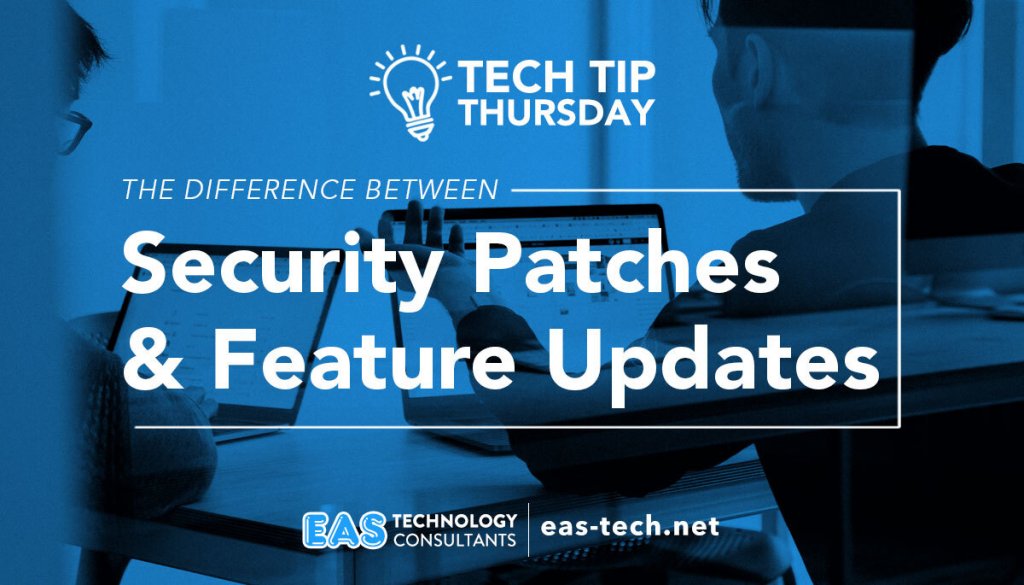
There is a lot of change in the world of software, but not all change is good. In fact, much of it can be confusing and overwhelming for users. This is especially true when it comes to security patches and feature updates. Many people don’t know the difference between the two, and as a result, they often end up confused and frustrated. In this blog post, we will discuss the difference between security patches and feature updates, and why simple is always best!
Why is patch management important?
Patch management is the process of identifying, acquiring, installing, and verifying patches for software products. The goal of patch management is to ensure that all software products are up to date and free of vulnerabilities. In order to be effective, patch management must be performed on a regular basis.
What’s the difference between a security update and a feature update?
A security update is a change to a software product that is designed to fix a security vulnerability. A feature update is a change to a software product that adds new features or functionality.
Security updates are typically released on an as-needed basis, while feature updates are usually released on a regular schedule. For example, Microsoft releases security updates for Windows on the second Tuesday of every month, and releases feature updates for Windows twice a year.
Why is it important to know the difference?
It is important to know the difference between security updates and feature updates because they can have different effects on your computer. Security updates usually do not require you to do anything, as they are designed to fix vulnerabilities without changing the way the software works. Feature updates, on the other hand, can often change the way the software works and may require you to take action in order to use new features or keep existing features working properly.
How does patch management work?
Patch management usually works by installing new software patches as soon as they are released. In some cases, patch management can also involve uninstalling old or outdated software patches. Patch management is typically performed by IT professionals or system administrators.
What are the benefits of patch management?
Patch management can have a number of benefits, including:
-Improved security: By keeping all software products up to date, patch management can help to reduce the risk of vulnerabilities and exploits.
-Reduced downtime: By installing new patches as soon as they are available, patch management can help to reduce the amount of time that systems are down for maintenance.
-Improved productivity: By keeping software products up to date, patch management can help to improve the overall productivity of users.
What is a patch management lifecycle?
The patch management lifecycle typically consists of four phases:
-Planning and preparation: In this phase, IT professionals or system administrators identify the need for patches and develop a plan for deploying them.
-Deployment: In this phase, new software patches are deployed to systems.
-Testing and verification: In this phase, new software patches are tested to ensure that they work as intended.
-Maintenance: In this phase, IT professionals or system administrators monitor systems for new vulnerabilities and deploy new patches as needed.
What is vulnerability management?
Vulnerability management is the process of identifying, classifying, and mitigating vulnerabilities in software products. Vulnerability management is typically performed by IT professionals or system administrators.
What are the benefits of vulnerability management?
Vulnerability management can have a number of benefits, including:
-Improved security: By identifying and mitigating vulnerabilities, vulnerability management can help to reduce the risk of exploits and attacks.
-Reduced downtime: By identifying and mitigating vulnerabilities, vulnerability management can help to reduce the amount of time that systems are down for maintenance.
-Improved productivity: By identifying and mitigating vulnerabilities, vulnerability management can help to improve the overall productivity of users.
What is your organization doing today in regards to patch management and vulnerability management? Are you handling this yourself or depending on a third-party vendor to handle this for you? Or, maybe you’re not managing it at all currently.
We can help you get your patch management process under control so your organization is better prepared to meet new security threats and challenges head-on. Simply submit your name and email address below and we’ll be in touch!
